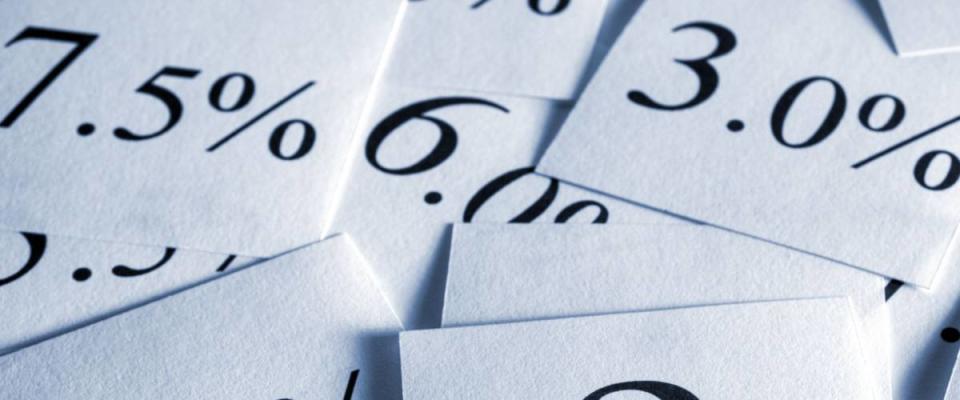When Should You Tap Into Your Home Equity With a HELOC?

Consumers who need funding for major expenses increasingly turn to the popular HELOC, which is short for home equity line of credit. You might think of it as using your home as a giant credit card.
With a HELOC, you borrow from your home's value, often if you’re in dire need of a roof replacement or a kitchen makeover. Home equity lines can be a godsend for remodeling jobs, given that the typical project costs around $46,000.
HELOCs are flexible and convenient, and the upfront costs are typically lower than for conventional loans.
Find out if a HELOC is right for you.
How much can you borrow with a HELOC?

You borrow from your available home equity.
A HELOC allows you to borrow against your available home equity, which is simply your home’s appraised value less the amount you owe on it.
If your home is valued at $500,000 and you have $350,000 remaining on your mortgage, then you have $150,000 of equity.
Lenders typically cap HELOCs at 85% of the home’s market value, minus what's owed. In the example above, you’d be able to borrow up to $75,000: $500,000 times 85% is $425,000, minus $350,000 gives you $75,000.
Lenders also look at a homeowner's credit history, employment history, income and total debt to determine the credit limit.
How exactly does a HELOC work?

A HELOC is very similar to a credit card.
A HELOC is a revolving loan, similar to a credit card. During what's called the "draw period," you can withdraw any amount within your limit, at any time. Your balance fluctuates as you borrow, and available credit is replenished as you make payments.
You can access funds from your home equity line of credit throughout the draw period — usually the first five to 10 years of the loan, with 10 being most common. You’re required to pay only the interest during the draw period.
Once the draw period ends, a 10- to 20-year repayment period begins. You can no longer withdraw funds, and you must start paying down the principal.
The revolving credit line distinguishes HELOCs from other types of home loans. With the typical mortgage, you're given a lump sum upfront and a fixed repayment schedule that starts immediately.
The interest on HELOCs

HELOCs come with variable interest rates that are based on the prime rate.
Most HELOCs come with variable interest rates that track the prime rate. The variable rates are usually lower than the fixed rates on other loans.
A home equity line might be advertised as having a rate of "prime plus 2%." That means when the prime is 5%, the HELOC's rate is 7%. If banks raise the prime to 5.25%, the HELOC's rate rises to 7.25%.
As a HELOC balance fluctuates with user activity and rising or falling interest rates, the monthly payments may go up or down.
Some lenders have begun offering home equity lines with a fixed-rate option — and the potential for more predictable payments. Borrowers may move an outstanding balance over to a fixed interest rate that will never change.
Under the 2017 tax law, the interest on HELOCs may be tax deductible, but only if you use the money to buy, build or make major improvements to a home.
Getting the best deal on a HELOC

You'll want to shop around for the best HELOC interest rate and terms.
A smart homeowner will shop around for the best terms and the best rates on home equity lines of credit.
You might find a HELOC at 5.4% — with a 12-month introductory offer of 3.5%. Also, look for periodic or lifetime interest rate caps, because they can save you a fortune.
As you comparison-shop, investigate HELOC fees, because they can vary from lender to lender.
You might pay an application fee, closing costs, an annual fee, a transaction fee for each withdrawal, or an early closure fee. Many lenders are willing to waive or negotiate certain fees.
The risks of a HELOC

You can lose your home if you don't make your HELOC payments.
Like any other form of borrowing, a home equity line of credit is not without risks.
The most obvious and serious pitfall is potentially losing your home, which you’re putting up as collateral. If you’re suddenly unable to make your payments, the bank might foreclose.
Some HELOC borrowers can’t resist the temptation to live beyond their means. They don’t have the discipline to pay on the principal before they’re required to, and they’re in for a shock once the repayment period kicks in.
The monthly payment can jump by more than 50% at the end of the draw period, according to a study from the credit reporting agency TransUnion.
The Great Recession exposed another risk: Under certain circumstances, lenders can cancel HELOCs or freeze or reduce lines of credit. But you’re most likely safe if you make all your payments on time, if your home retains its value, and if the economy stays healthy.
HELOC vs. home equity loan

HELOCs and home equity loans are not the same.
Because of their similarities, it’s easy to confuse HELOCs with home equity loans. Both leverage your home equity and use your house as collateral. There are, however, some key differences:
HELOC funds in any amount up to the credit limit are available as needed throughout the draw period. Home equity loan funds are paid upfront in a lump sum.
HELOCs are usually offered at variable interest rates. Home equity loans typically come with fixed rates.
HELOC payments are made only on the amount borrowed after the funds are drawn. Home equity loan payments are made in regular installments over the loan term.
Other HELOC alternatives

You have other options to consider besides HELOCs and home equity loans.
Need a pile of cash but not sure a HELOC or home equity loan is the answer? You have other options.
In a cash-out refinance, you replace your mortgage with a completely new one — for more than you owe. The excess is drawn from your home equity, and you receive it as cash at closing.
Cash-outs usually have higher interest rates and additional costs, including the fees known as "points."
You might get a good deal on a cash-out refi if you have squeaky-clean credit. Mind you, though, you’re still borrowing against your home.
Alternatively, you might take out a personal loan. Provided you have decent credit and an asset to use as collateral, like CDs or money in a savings account, a secured personal loan could win easy approval.
You may be able to borrow more than you would with a HELOC, and you don't have to put your house at risk.
If you need funds for a home repair, your contractor might offer a payment plan. Just scrutinize the contract for hidden fees or unreasonable interest rates.
Finally, if you can postpone a big-ticket expense, build up your own cash reserve in a high-interest savings account. It's a great way to save up for your next big project — or any unexpected emergency that might come along.
Join the MoneyWise mailing list. You’ll get the latest financial tips and news, straight to your inbox.

